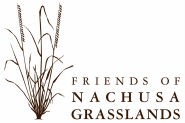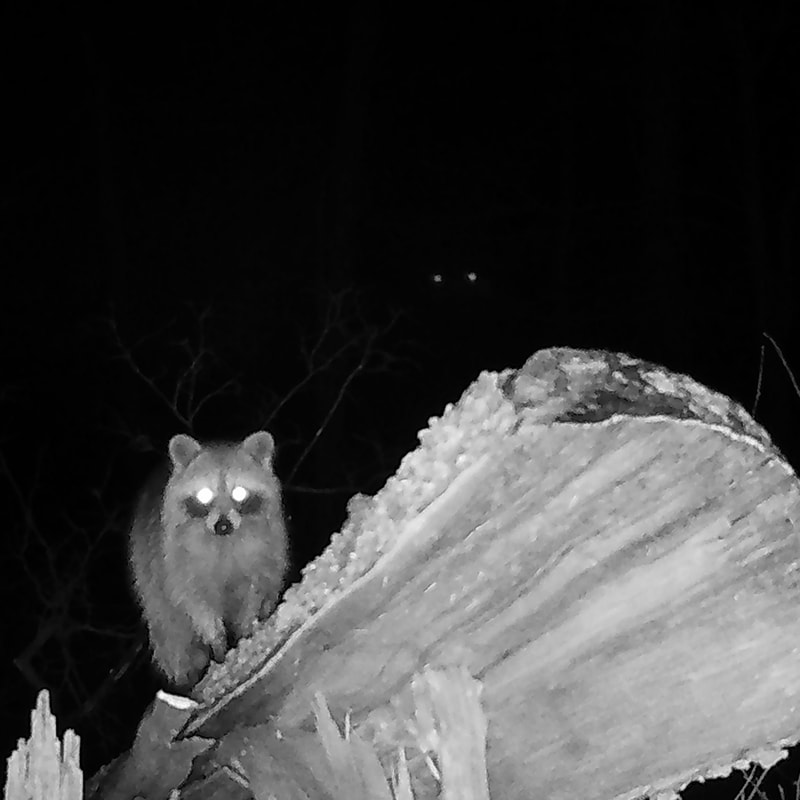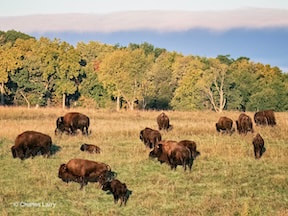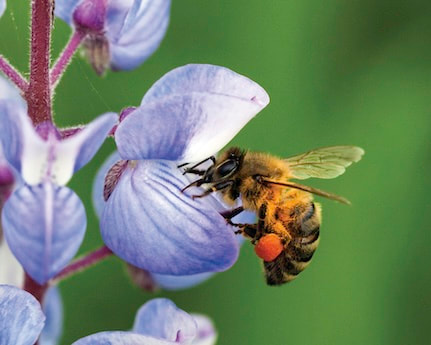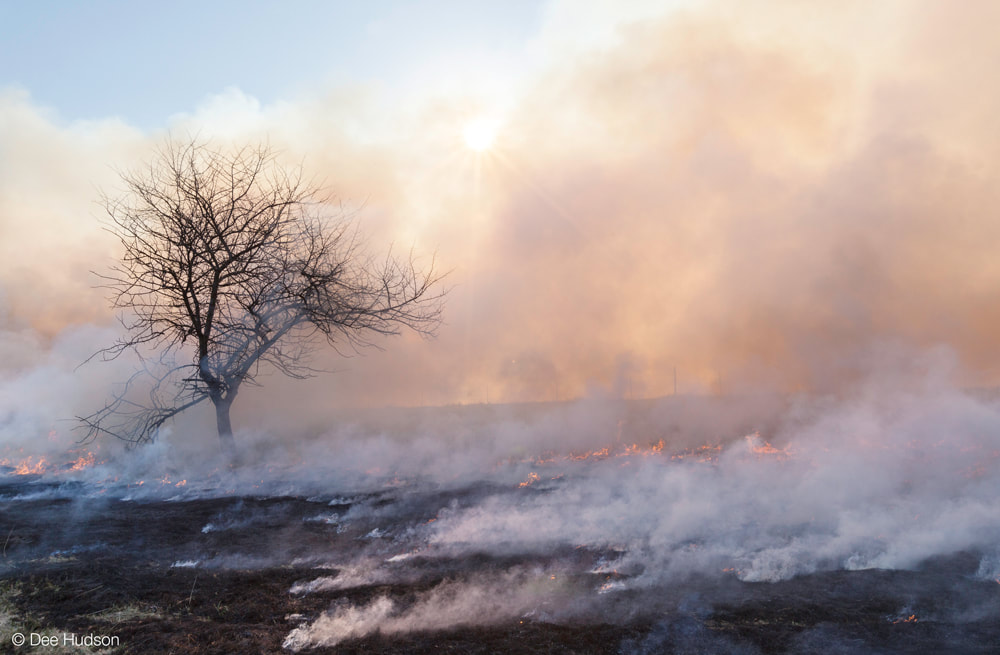Friends of Nachusa Grasslands 2024 Scientific Research Grants – $70,617
To support scientific endeavors, Friends of Nachusa Grasslands awards monetary grants to qualified candidates conducting scientific research significant to Nachusa Grasslands.
Research projects focus primarily on prairie, savanna, wetland, woodland, and stream habitat management, such as prescribed fire, seed collection, weed control, general or specific flora or faunal populations, and natural areas restoration.
Thanks to a 1:1 challenge grant and the generous support of individual donors, organizations, and foundations, Friends has awarded $70,617 for 2024-2025, divided in varying amounts among thirteen researchers.
Research projects focus primarily on prairie, savanna, wetland, woodland, and stream habitat management, such as prescribed fire, seed collection, weed control, general or specific flora or faunal populations, and natural areas restoration.
Thanks to a 1:1 challenge grant and the generous support of individual donors, organizations, and foundations, Friends has awarded $70,617 for 2024-2025, divided in varying amounts among thirteen researchers.
Donations to Friends can be designated to Scientific Research Grants.
2024 Grant Recipients, Projects, and Amounts
|
Samantha Berk, MS candidate, Northern Illinois University. “Quantifying the functional impacts of bison grazing intensity on plant communities in tallgrass prairie restorations.” This project will explore the impacts that varying grazing intensities have on plant functional diversity and ecosystem function in tallgrass prairie restorations of different ages. By studying these functional impacts in the natural mosaic of varied grazing intensity at Nachusa, scientists will better understand how grazing can be applied to maximize management objectives and create healthy, functioning ecosystems. $7,619. [email protected]
Bala Chaudhary, PhD, and Tristan Wells, BA candidate, Dartmouth College. “Hitching a ride? Bison as potential co-dispersers of seeds and symbiotic mycorrhizal fungi.” Almost all native prairie plants form belowground symbioses with arbuscular mycorrhizal (AM) fungi. Their ability to disperse into new environments is underexplored. This project seeks to answer 1) how the AM fungal community differs across grazed, ungrazed, and wallowed plots, 2) if AM fungi are present in bison dung or fur, and 3) if bison wallowing could potentially co-disperse seeds and AM fungi. $7,832. [email protected] Anant Deshwal, PhD, Bradley University. “Connecting Conservation Efforts in Illinois to Grizzly Bear Conservation in the Rockies.” Fall Army Cutworm moths are considered an agricultural pest, but they are a tallgrass prairie species linked to grizzly bear foraging. This project hopes to quantify Fall Army Cutworm Moth adult and larval abundance and foraging time in the Nachusa Grasslands and the adjoining agricultural fields, while highlighting the importance of tallgrass prairies in mitigating the agricultural impact of Fall Army Cutworm Moths in the conservation of Grizzly Bears in the Rockies. $4,000. [email protected] Pete Guiden, PhD, Hamilton College. “The enemy of my enemy: do diverse rodent communities limit the spread of invasive plants?” This study will examine the effects of tallgrass prairie rodent biodiversity (which is indirectly shaped by management decisions like prescribed fire and grazing) on food webs. Specifically, investigators want to know whether seeds of invasive plants are more likely to be consumed by high-diversity rodent communities, providing a new "natural" tool for managers to prevent the spread of invasive plant species. $8,400. [email protected] Christiana Guthrie, BS, and Katharine Hogan, PhD, Northern Illinois University. “Comparing natural and experimental plant characteristics to inform prairie restoration and management practices.” Building off 2023 research at Nachusa and a parallel prairie restoration experiment at NIU, this project will explore the difference in key plant characteristics (i.e. height, leaf size) between natural and experimental restored prairies. Assessing the similarities between natural and experimental restorations can help us understand how key prairie ecological functions respond to management, as comparing natural to experimental prairies can uncover possible ecological causes of observed patterns in natural prairies. $4,092. [email protected] [email protected] Robert Jean, PhD, Environmental Solutions and Innovations, Inc. “Community dynamics, parasite loads, and targeted collections of native bees and domesticated honey bees at Nachusa Grasslands.” ESI will continue studies on pollinators at Nachusa Grasslands. Dr. Jean will investigate differences in bee community composition and parasite loads within native bees and domesticated honey bees at various distances from a large honey bee aggregation/apiary at Nachusa Grasslands using ethanol and utilizing RNA analysis. Additionally, targeted collecting at specific wildflower species and time frames will be conducted. $8,000. [email protected] |
Ashley McDonald, PhD candidate, and Jennifer Schultze, MS candidate, Southern Illinois University. “Efficacy of predator control and prevalence of zoonotic pathogens in northern Illinois raccoons.” This study has two primary objectives: (1) to determine the intensity of trapping effort needed to reduce raccoon populations and (2) to assess the prevalence and distribution of zoonotic pathogens in raccoons. The researchers will investigate the efficacy of raccoon removal through predator control and use camera traps to monitor spatial distribution of raccoons before, during, and after removal. $5,000. [email protected] [email protected]
Gavin McNicol, PhD, University of Illinois Chicago. “Effects of ecosystem type, environmental gradients, and prescribed fire on Midwest ecosystem climate interactions.” This study aims to continue quantifying the greenhouse (GHG) balance of Nachusa prairies, woodlands, and wetlands. In 2024, the McNicol lab will capture the management effects of prescribed fire on the prairie and wetland ecosystem units in Tellabs West to understand how fire modulates the GHG exchanges we have seen during the 2022 and 2023 growing season, which were not preceded by burns in the prior spring or fall. $7,393. [email protected] Ethan Rose, PhD candidate, Michigan State University. “The role of climate and bison grazing in tallgrass prairies.” This study will continue the 2nd of a 3-year investigation of the individual and interactive roles of climate and bison grazing in remnant and restored prairie plant communities across the tallgrass prairie ecosystem. This research spans several sites, and will compare plant communities at Nachusa grasslands with and without bison grazing to those of similar sites across the tallgrass prairie region. We will elucidate the mechanisms for differential community structure across rainfall and temperature gradients, and determine their influence on responses to reintroduced grazers. $2,500. [email protected] Elizabeth Small, MS candidate, Northern Illinois University. “Dietary niche shifts for common small mammal species in response to prescribed fire and bison grazing in a tallgrass prairie.” In restored prairies, small mammals sit at the center of the food web and are responsible for significant energy flow through the ecosystem. This study will investigate trophic niche dynamics of small mammal assemblages to assess food web responses to prescribed fire and bison grazing, which influence resource availability for consumers. $5,455. [email protected] Cameron So, PhD candidate, McGill University. “Testing the conservation value of range-edge populations: local adaptation, genetic load, and inbreeding in Lupine.” Whether adaptation is promoted or thwarted at range edges is an ongoing debate: edge populations could be adapted to local conditions or suffer from low genetic quality due to inbreeding, etc. Using a combination of field experiments and genomic approaches, this project will test whether edge populations are locally adapted or low in genetic quality. $2,239. [email protected] Bianca Saftoiu, MS candidate, University of Illinois. “An assessment of ecological communities within restored prairies along an urban-rural gradient.” This project focuses on investigating the effect that vegetation structure, patch connectivity and size, as well as components of surrounding land cover have on both small mammal and pollinator communities. To assess community composition of small mammals and pollinators using a variety of different methodologies and evaluate the effect that both habitat-level and landscape-scale factors have on these communities. $3,137. [email protected] To receive information about the 2025 grant guidelines and application process that will be available in the late summer, contact [email protected]. |
Past research projects supported by the Friends are listed on each year's Science Grants page:
UPDATED 02/2024
